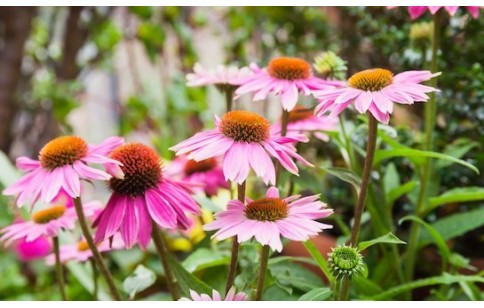- Code : #6034 S 20 mg
- Formula : C₉H₈O₄
- CAS : 331-39-5
Echinacea purpurea
Echinacea purpurea, “Purple coneflower” or “Eastern purple coneflower” in English, called “Echinacée pourpre” in French, belongs to the Asteraceae botanical family.
This herb is native to North America where it grows in rocky, open woods, thickets, prairies, especially near waterways. It is extensively grown as an ornamental.
It is mainly the root that is used to make the drug, which comes from the traditional medicine of North America’s native Indians. Along with Echinacea pallida and Echinacea angustifolia, it was the most widely used plant drug in the US in the 19th century.
It is used as a medicine for the prophylaxis and treatment of colds and influenza, for the stimulation of immune defenses, and for its anti-infective, anti-viral and anti-fungal activity.
Its main constituents are echinacoside, cynarin, chicoric acid and chlorogenic acid.

- Code : #4987 S 10 mg
- Formula : C₂₂H₁₈O₁₂
- CAS : 70831-56-0
- Code : #4991 S 50 mg
- Formula : C₁₆H₁₈O₉
- CAS : 327-97-9
- Code : #4995 S 10 mg
- Formula : C₂₅H₂₄O₁₂
- CAS : 30964-13-7
- Code : #B9009 5 g
- Code : #4988 S 20 mg
- Formula : C₃₅H₄₆O₂₀
- CAS : 82854-37-3
- Code : #3532 S 10 mg
- Formula : C₂₉H₅₀O
- CAS : 83-46-5








